Rich in War
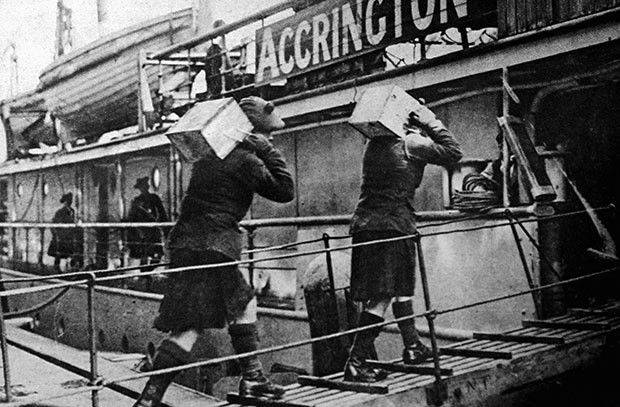
How Neutral European Countries Survived and Profited in 1914-18
During the First World War, only six European countries remained neutral - the Netherlands, Switzerland, Denmark, Spain, Norway and Sweden. Their citizens were lucky to avoid the horrors of bloody slaughter, occupation and devastation. As a result of the Great War, they all benefited - the economies of neutral countries worked hard for the warring powers, sometimes on both sides at the same time. It was during the Great War that the foundations of the current “Scandinavian socialism” and the glory of Swiss banks were laid. However, this wealth was given to most neutrals is not easy. Only a very limited number of bankers and industrialists personally capitalized on the war, and for most ordinary citizens, war turned into mass unemployment and the same grocery cards. As neutral countries of Europe, they lived in the midst of a massacre, they endured the hardships and the gains - in the “Russian Planet” material.
Dutch cheese on both sides of the front
Holland for 1914 was not a small European country, but a large and rich colonial empire. Its overseas possessions in the East Indies (Indonesia) and the West Indies (Islands of the Antilles Archipelago and Suriname) exceeded the size of the metropolis more than 60 times. 38 million people lived in the colonies, while the population of Holland itself was barely more than 6 million. According to the formal number of subjects Koninkrijk der Nederlande, the Kingdom of the Netherlands, was slightly inferior to Austria-Hungary, one of the largest powers of the beginning of the XX century.
Moreover, in terms of economic development, Holland was then one of the leading countries, taking 1914 to 5 in the world in terms of foreign trade by XNUMX, and every tenth adult Dutchman then worked in the banking and financial sector.
Since the 18th century, the Netherlands has traditionally maintained allied relations with England, without which they could not afford to maintain a large maritime trade and large colonies. But by the end of the 19th century, a significant part of Dutch industry was closely associated with the booming German economy, and many politicians began to focus on the Second Reich. So, in 1905, the Dutch Prime Minister Abraham Kuiper, a Calvinist fanatic, tried to join Holland to the “Tripartite Alliance” - the military-political bloc of Germany, Austria-Hungary and Italy. Italy, as you know, in the year 1914 turned over to the side of the Entente. In Holland, right up to 1914, there was a debate about the country's geopolitical orientation - to England or Germany. In the end, the merchants and bankers of Amsterdam, Rotterdam and The Hague chose to maintain a more advantageous position of an outsider in the emerging conflict. Already 30 July 1914, before the declaration of war by Germany to Russia, Holland officially declared neutrality, which, however, was almost immediately broken.
According to the famous Schlieffen plan — the project of the German General Staff for a “blitzkrieg” —the German army, when attacking France through Belgium, was to follow the roads of the Netherlands province Limburg. However, in August 1914, Kaiser Wilhelm II decided not to take the risk of sacrificing tactical benefits in order to maintain his neighbor’s neutrality. Nevertheless, on August 4 several squadrons of German cavalry marched along the edge of Dutch territory near the village of Vals.
Great Britain, France and Belgium immediately sent notes of protest to Amsterdam, stating that according to the norms of neutrality, all soldiers of the belligerents who found themselves in the territory of the Netherlands should be "immediately disarmed and interned." The Dutch government until January 1915 announced that it was investigating the incident, and then chose to forget about it.
Holland was the only neutral country in Europe, which was already fighting near the borders of 1914. Therefore, despite the peaceful status, in the country of August 1, the mobilization of 200 thousand reservists began. Before the war, the Dutch army in its European territory numbered only 60 thousand people, but then its number was increased to 450 thousand bayonets.
The Dutch did not have to fight, but they faced another problem. By October, 1914, from the territory of Belgium, where the fighting had developed, 900 thousand people had fled to Holland. Later several tens of thousands of refugees, deserters and runaway prisoners of war from both sides of the front were added to them. In the Netherlands, 7 had to organize large camps for refugees from Belgium, as well as special camps for interned soldiers, which were visited by 35 thousand Belgian soldiers, over 15 thousand deserted Germans, several hundred escaped British prisoners, French, and even several dozen Russians.
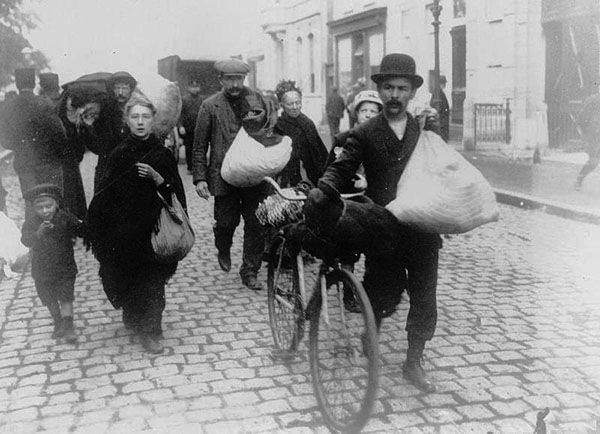
The first neutrality of the Netherlands was preoccupied with England, which feared that the Dutch merchant fleet would be used to supply food and strategic raw materials to Germany. Several dozen steam ships under the flag of the kingdom were detained in the ports of the British Empire.
Already 20 August 1914, the Parliament of Great Britain passed a law that gave the Navy the right to detain any ships of neutral countries and to inspect and even arrest them until the purpose of the assignment was ascertained. In case of suspicion, the goods were confiscated. This was a direct violation of the then existing international laws, according to which non-military cargoes of the enemy (for example, foodstuffs), which were on a ship under a neutral flag, were declared inviolable. But in the conditions of total war, the British did not care about previous contracts.
The first thing that hit the trading the fleet The Netherlands, which at the beginning of the war numbered about a thousand steamboats and only slightly inferior to the German one. Already in November 1914, the Dutch had to create a special “Netherlands Overseas Trust Company”, which, under an agreement with London and Paris, received the right to sea transportation. But throughout the war, the British conducted searches of Dutch ships.
This greatly complicated, although it did not stop the "smuggling" of overseas goods and raw materials to Germany through the Netherlands. For example, by the year 1916, deliveries of meat from Holland to Germany increased by 4 times, and cheese - by 5 times as compared with prewar times. The Germans paid first of all with the coal on which all the Dutch industry worked and kept all the heating in the country.
However, in 1915-16. German submarines "accidentally" sank the Dutch ships 6. In total, during the years of the First World War, Holland lost 88 steamers from mines and torpedoes of the warring sides - almost 10% of its merchant fleet.
The war seriously undermined the Dutch colonial trade - the prices of rubber, sugar and tea fell below cost. In 1915, the Entente countries banned the importation into the Netherlands of any goods that could be resold to Germany, and food problems began in the country. Cards were introduced for bread, sugar, cocoa, coffee and other goods.
In April 1917, the United States joined the Anglo-French blockade, which stopped exporting oil, coal, grain, iron and a number of other goods to the Netherlands. In October 1917, the US government closed its coal depots for Dutch ships, and over the 90 steamers were stuck in the USA until the end of the war. By that time, the 45 steamers under the flag of the Netherlands were arrested in the ports of Great Britain. As a result, by 1917, the turnover of Dutch ports decreased by 10 times compared with the pre-war.
In the 1918 year, when the issuance of products on cards was greatly reduced, a wave of unrest swept through the cities of Holland. They were called the "potato riot", as hungry mobs attacked shops, warehouses and barges with potatoes, the staple food of ordinary Dutch people during the war years.
In the spring of 1918, the German General Staff seriously considered the question of the occupation of Holland, and even allocated reserves for this. The commander-in-chief of the army and fleet of the Kingdom of the Netherlands, General Snyders, although he had 450 thousands of soldiers, said that it was pointless to resist the German invasion. But Kaiser Wilhelm II was dissuaded by the courtiers, and after only a few months, in November 1918, he himself had to flee from the German revolution to Holland. The Minister of Finance of the Kingdom of Marie-William-Frederik Treb then suggested to the Dutch "to consider it happiness that they jumped out of the fire without receiving serious burns." Indeed, the Netherlands survived the war even with some profits - while the population of other countries was declining, in Holland it grew by half a million people, or by 8%.
Despite the loss of merchant ships, legal and “smuggling” trade on both sides of the front yielded huge profits. The country's gold reserves during the years of World War II grew 4,5 times. In 1915-18 400 tons of precious metal, mainly from Germany, got into the safes of the central bank of the Netherlands. By the end of the war, the value of Holland’s gold reserves was almost 2 times the total nominal value of all paper money that was circulated both in the metropolis and in the colonies.
The profits and benefits derived from neutrality, gave Holland the opportunity not only to avoid revolutionary upheavals, but also to carry out social reforms. By 1920, the country introduced an 8-hour working day, an 45-hour working week, reduced the retirement age from 70 to 65 years, granted women the right to vote.
Swiss gnomes Bismarck
By the beginning of the 20th century, Switzerland was quite a prosperous country, although not very rich. The famous Swiss banks have already worked, but have not yet reached the heights of glory and prosperity. They will bring just neutrality in two world wars.
In 1914, on the territory of the Swiss Confederation, bordering France, Germany, Austria-Hungary and Italy, 3,7 million people lived. In August of that year, 220 thousand people were mobilized to protect the Swiss borders from a possible invasion. Any of the belligerent powers could potentially break the Swiss neutrality and lead their troops against the enemy through the passes of Helvetia. Therefore, the Swiss began to actively build fortifications and by the autumn of 1914, they mined all mountain passes on the borders.
More than half of the Swiss spoke and speak German, and only a fifth - in French. By the beginning of the 20th century, the economy of confession was most closely associated with Germany and Austria, and pro-German sentiment prevailed in the country. The Swiss army was built and trained according to the German model, Kaiser Wilhelm II more than once visited her military exercises.
In a country composed of self-governing communities, even the commander-in-chief of the army was elected by vote. The main candidates for this post in August 1914 were the Swiss Germans - Colonels Ulrich Wille and Teofil Shpreher. In peacetime, the title of colonel was the highest in the 30-thousandth of the Swiss army. And if Sprecher was a supporter of neutrality, then Ville was guided by Germany. He was not only born in Hamburg and studied in Berlin, but was a relative of Otto von Bismarck.
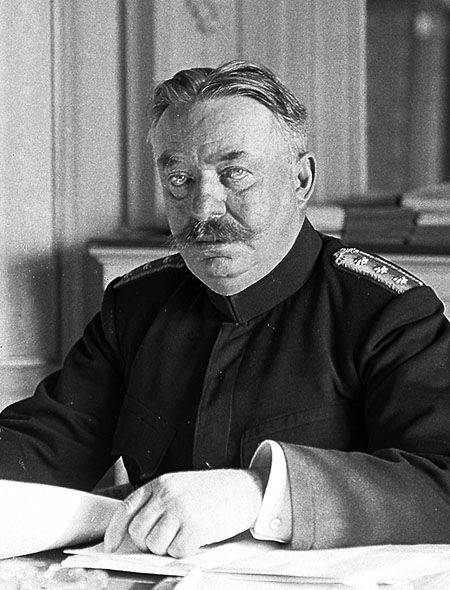
8 August 1914, the Swiss Federal Parliament elected Ulrich Ville as Commander, giving him the rank of general for the war and mobilization. This strengthening of the pro-German commander-in-chief caused protests in the French-speaking part of the country, but Ville was already secretly discussing with the German generals an action plan in the event of a French invasion.
However, cautious Swiss politicians decided to wait. And when in the spring of 1915, Italy entered Italy on the side of the Entente, they immediately signed a secret agreement with France on joint actions in case of a German invasion. In response, Ville 20 on July 1915 of the year explicitly invited the Confederation Parliament to join the war on the side of Germany, which caused a sharp political debate, and the country's chief military doctor Hauser suggested even concluding a commander-in-chief in a psychiatric clinic diagnosed with senile dementia (General Ville was already 66 years old). As a result, the cunning Swiss did not join anyone.
True, until 1916, the headquarters of the Swiss army transferred all the intelligence it had to Germany. When it became known to the Entente, a scandal erupted. In response, the imperturbable Ville pointedly condemned the two Swiss colonels, convicted of transmitting intelligence information to the Germans, on 20 days of imprisonment.
Throughout 1916-17. Ulrich Ville was actively preparing the Swiss army for the French invasion. From 1914 to 1918, the warring parties — French, German, Italian, and Austrian soldiers — violated the border of the confederation more than a thousand times. The situation was complicated by the fact that in the mountains it was often not indicated in any way.
Meanwhile, world war affected the internal life of Switzerland. Since 1915, a landlocked country has been surrounded by warring powers. In order to centralize import purchases, especially food, the authorities created the Swiss Society of Economic Supervision and the Swiss Office of Trade Control. In fact, the entire economy of the country was placed under state control. From 1915, a special tax was imposed on the maintenance of a large army, and soon, due to the difficulties of purchasing food abroad and the shortages of bread, the confederation authorities introduced a rationing system for basic products.
In the summer of 1917, a new scandal broke out around Swiss neutrality. French intelligence learned that one of Switzerland’s leading politicians, Arthur Hoffman, had sent a representative to Petrograd, trying to mediate in separate peace negotiations between Russia and Germany. As a result, the failed peacemaker resigned.
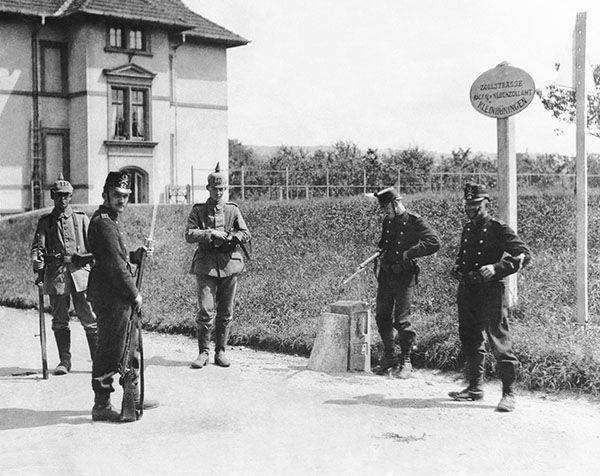
Meanwhile, by the fall of 1918, Switzerland’s internal situation was further complicated. Because of the difficulties with importing food, the ration of rations on ration cards in cities has decreased to 250 gr per day. True, it was not a real hunger, since the market could still get food. But chronic malnutrition has affected the poor strata of Switzerland. The authorities even began a forced mobilization of the population for agricultural work.
30 September 1918 year it came to the point that bank clerks of Zurich went on strike, announcing that during 1917 a year bank owners on financial fraud on both sides of the front earned 35 million Swiss francs (over 100 tons of gold) of net profit, but continue to keep citizens countries on half-starved rations. In November 1918, the country was swept by a general strike in which more than 10% of the population took part. To suppress unrest, the authorities attracted even units of the army that had not fought.
Following the war, neutral Switzerland almost acquired a new territory - after the collapse of Austria-Hungary at the end of 1918, her former province of Vorarlberg intended to join the confederation. And the Swiss refused such a gift only under the pressure of England, France and Italy.
The end of the war did not immediately lead to the normalization of life in Switzerland. For example, bread cards were canceled only in August 1919 of the year, and for milk - in May 1920. However, the blockade and funds accumulated during the war years allowed the authorities to improve the lives of employees - from 1918 in Switzerland, the 48 hourly working week was set (whereas, on average, 1914 worked weekly for 60).
It was after 1918 that the Swiss banks began to gain worldwide fame as reliable custodians of secret accounts and bank secrets. The gold reserves of the confederation for the years of the First World War grew 2,5 times.
Before 1913, Brussels was the leading banking center for clandestine operations, but the capital of Belgium was occupied by the Germans, and the banks of Zurich, Geneva, Bern intercepted the role of intermediary bankers. It was there that for the provision of financial operations on both sides of the front bank and commercial secrets were first equated to the state.
“Something rotten in the Danish state”
By the beginning of the 20th century, the Kingdom of Denmark was not just a prosperous, though small, country, but one of the most "authoritative" in Europe - the Danish king Christian IX was the father of the English queen, the Russian empress and the Greek king. It is not by chance that the king and his wife, Queen Louise, were called "the father-in-law and the mother-in-law of Europe." The Danish king at the same time wore the title of General of the English and Colonel General of the German armies. But at the same time, Copenhagen’s relations with Berlin remained strained. Back in 1864, Prussia took the southern provinces off Denmark during the short war, and the Danes didn’t particularly like the Second Reich.
However, the small country realized that in the event of a big war it would not be able to protect itself. By 1914, the population of Denmark was less than 3 million, its peacetime army was symbolic - 13 734 man, and even after mobilization it would be less than 70 thousand bayonets. Therefore, back in 1906, the Danish government secretly promised Germany that it would strictly adhere to neutrality. In 1912, Denmark, Sweden and Norway adopted a joint declaration of neutrality, which, in particular, proclaimed the unity of views on neutrality and the fact that they would not change its rules without coordination with each other.
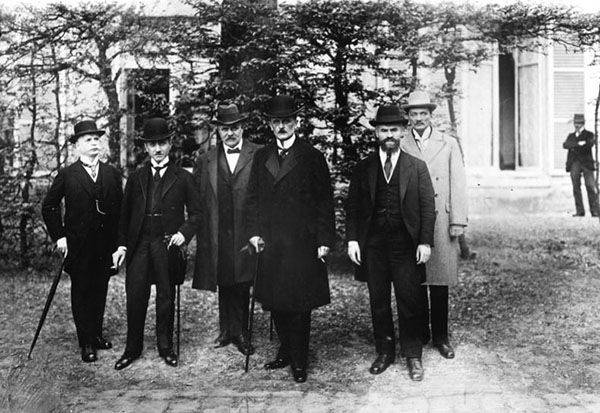
2 August 1914, Denmark declared its neutrality in the war. On the same day, the German ambassador to Copenhagen, Count Brokdorf-Rantzau, handed a note to the head of the Danish Ministry of Foreign Affairs, Scavenius, stating that Berlin “would observe the state immunity of Denmark, but regardless of the will and desire of Germany, military operations could touch Danish territory, therefore Germany draws the attention of the Danish government to the seriousness of the situation. " 3 August was followed by a response, stating that Denmark “believes the promises of the German side and hopes that neutrality will not be violated,” and that hostilities will not affect its territory.
The strategic importance of Denmark was that it controlled the straits connecting the Baltic Sea to the Atlantic. As early as the 19th century, the Germans dug the Kiel Canal on their territory, connecting the Baltic and the Atlantic bypassing Denmark, but they needed to prevent the Baltic Sea and the English fleet. Therefore, already on August 4, the German destroyers, without notifying the Danes, began laying mines in the Danish straits. In response, the British themselves began to mine the same straits. Thus, the neutrality of Denmark was violated at once by both warring parties.
The mobilization of Denmark did not start, since the fighting on land was carried out far from its borders. In addition, in Copenhagen, they understood that even a fully mobilized army would be able to defend the country for only a few days.
The main danger and problem of Denmark during the war years were violations of maritime trade: the life and economy of the country were critically dependent on the supply of coal, grain, oil, cotton, etc. Until 1914, the main Danish product for export was meat and dairy farming - 60% went to England, 30% to Germany. With the start of the war, imports of Danish food to England dropped sharply - Denmark’s meat and butter almost completely went to nearby Germany, cut off by fronts and a sea blockade from other food sources. Additional food supplies from Denmark allowed Berlin to feed two dozen divisions.
By the year 1914, Denmark had a large canned meat factory 21. During the war, their number grew 7 times - up to 148, and the export of canned meat to the Second Reich grew more than 50 times. As a result, the number of cattle and pigs in neutral Denmark declined in the same proportions as in the warring Germany.
Calculating Danish businessmen, in order to increase profits, sold mostly the so-called “goulash” to the Germans — low-quality canned food in which meat was less than sauce and “vegetable content”, and the meat itself was diluted with offal. But starving Germany bought such products in any quantity. The nouveau riche, who had fabulously grown rich on food supplies to the Germans, was then called in the Scandinavian kingdom "goulashbarons". During the war years, they built real palaces all over the country, even creating a special architectural style.
But even greater profits from neutral Denmark came from the resale of strategic raw materials and supplies, which were mainly purchased in the United States. So, by November 1914, the kingdom bought copper there in 13 times more than before the war. The Danish East Asian Company engaged in such operations in 1916 paid its shareholders a dividend of 30% on invested capital. The gold reserves of Denmark during the years of the world war grew more than 2,5 times.
Danish capital was also active in Russia, where its interests were often lobbied by the mother of the last Russian tsar, the widowed empress Maria Fedorovna (nee Danish princess Dagmar). In particular, the “Danish rifle syndicate” built a machine-gun factory in the Vladimir province, the director of which was appointed the captain of the Danish army Jurgensen. The Tsar's treasury concluded a contract with Danish shareholders for 26 million rubles in gold (about 895 million modern dollars).
However, superprofits for the most part settled in the pockets of big business, and the war to ordinary citizens was mainly a loss.
England didn’t like that the Danes actually undermined the naval blockade of Germany for the sake of trade. The command of the British Navy even proposed to impose sanctions against Copenhagen, up to the military. But London preferred to maintain the neutral status of the kingdom, strengthening control over its trade.
In November 1915, the Entente demanded that all three neutral states of Scandinavia reduce imports, limiting it to “normal needs”. These "normal needs" were to be determined by the average level of importation in prewar time. Denmark agreed. In March, the British introduced the “certificate system”, that is, the issuance of special certificates for the right to transport goods by sea, and Denmark was included in the list of 1916 countries that should receive such permits from the British consuls to import any goods.
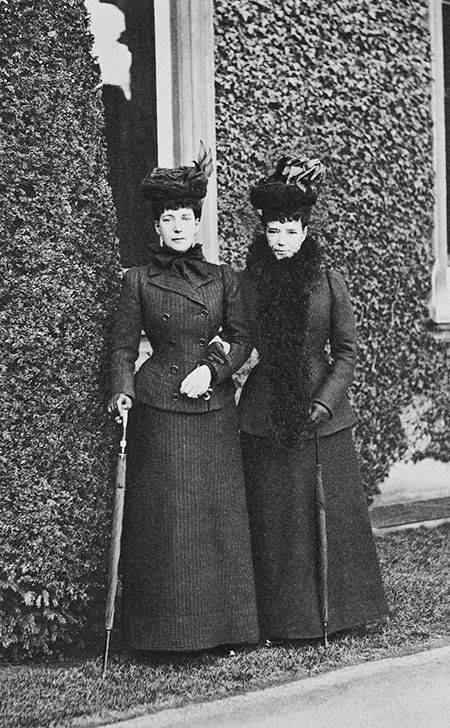
In fact, by the end of the First World War, all Danish maritime trade came under British control, which sharply reduced re-export of raw materials to Germany, although it could not stop it. No less affected, and the declaration of Germany in 1917, the "unlimited submarine war", which allowed its submarines to sink any suspicious ships. Due to the geographical position in Denmark, it hit hardest. The merchant fleets of the other “neutrals” - Holland and Norway - were easier to bypass the zones controlled by German submarines. The Danish government even suggested that England and Germany conclude an agreement on the so-called “limited shipping”, that is, to define safe sea “corridors”. But Berlin and London in the midst of the war did not do this. Therefore, since March 1917, the Danish ships had to sail to the Atlantic in a huge arc, moving far north along the coast of Norway in its territorial waters. However, this did not save the Danish steamers from German submarines - only from 1917 to 1918 years were 178 sunk by Danish merchant ships.
All this affected the internal situation of Denmark. If the first 1,5 of the war, the prices in the country almost did not change, and the standard of living even increased, then by the end of 1916, the reverse processes started - prices increased by more than a third compared to 1914, and by 1917, 1,5 times (although and it was ridiculous compared to what was going on in the warring countries).
Back in August 1914, the Danish government created a price regulation commission and banned the exchange of paper money for gold. Since 1915, “control commissions” have been created, and then special ministries for regulating trade and the economy, a state monopoly has been established for the import of grain and sugar. In the spring of 1917, cards were introduced for bread and flour, and by the end of that year - for butter and lard.
By 1918, due to the protracted war, virtually the entire economy of Denmark was regulated by the state. It was strictly regulated not only the production of agricultural products, but also their distribution (in particular, a law was passed prohibiting the use of food for livestock feed), state control over rail and sea transport was established. But despite all these measures and the super profits of individual capitalists, by 1918, almost every fifth adult man in Denmark was unemployed.
At the same time, the war significantly changed the borders of the kingdom. The fact is that Denmark in the Middle Ages, the former great maritime power, from the XVII century owned several islands in the Caribbean. In August, the US just launched the Panama Canal, 1914, and these three islets immediately acquired strategic importance, allowing you to control the exit from the canal to the Atlantic.
Back in 1902, Washington offered Copenhagen to buy islands, but the Danish Riksdag refused. In 1916, the United States again asked for the sale of the Caribbean islands, and Secretary of State Lansing explicitly stated to the Danish envoy in Washington that “circumstances could force the United States to seize the islands without Denmark’s consent”. After that, the Danes agreed to cede overseas territory for 25 million dollars.
The end of the world war did not immediately bring relief to Denmark - until the end of the 1918 of the year, the British continued to inspect all the Danish courts, and the state regulation of trade and food prices was finally canceled only at the end of the 1919 of the year.
However, the funds accumulated during the years of neutrality allowed the Danish industry to “shoot” after the war - already in 1920, the production volume exceeded the pre-war production by 40%, while the real incomes of industrial workers grew by almost 1919 by 1,5. Against this background, the introduction of the 8-hour working day did not seem to be a huge achievement.
Information